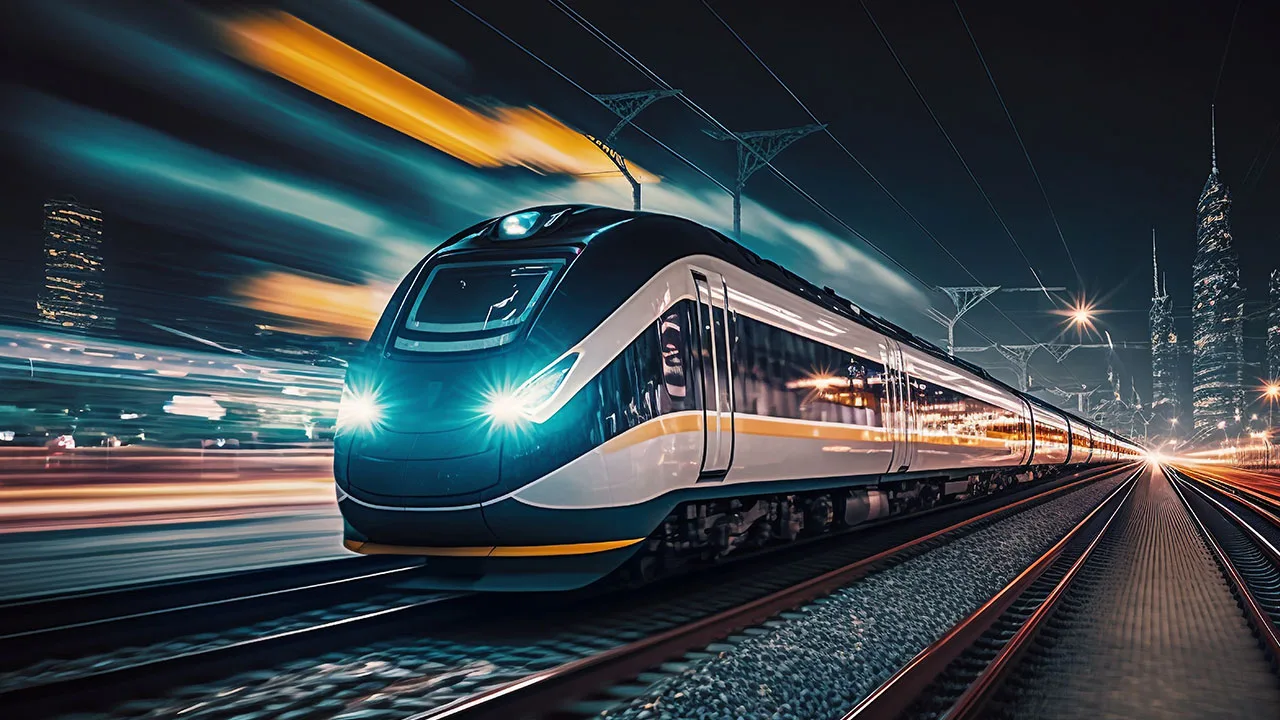Find the programme that meets your requirements and aspirations.
Apply nowSPJIMR blogs
- SPJIMR
- Blogs
- On track to net zero? Indian Railways’ electrification dilemma
On track to net zero? Indian Railways’ electrification dilemma

When India’s Railway Minister announced in parliament that 97% of the broad gauge network had been electrified, it should have been a moment of pure celebration. After all, this milestone represented years of effort towards the ambitious 100% electrification target set back in 2018. But as I prepared our case study on this transformation, I found myself grappling with a far more complex reality than the headline suggested.
The promise of electrification
On paper, the benefits of railway electrification are compelling. Indian Railways stands to reduce its operating costs significantly, cut its dependence on expensive imported diesel, and take a major step towards its bold 2030 net-zero emissions target. For a network that moves millions of passengers and tonnes of freight daily, these aren’t small gains. They represent a fundamental reimagining of how one of the world’s largest railway systems operates.
Yet in November 2024, as the chairman of the Railway Board prepared for a critical strategy meeting with the Union Minister, the achievement felt more like standing at a crossroads than reaching a destination.
When success invites scrutiny
The pushback came swiftly. Economists questioned the cost-effectiveness of the massive investment. Energy analysts raised concerns about operational flexibility, particularly in regions where power supply remains unreliable. Environmental critics pointed out an inconvenient truth: if the electricity powering these trains comes predominantly from coal-fired plants, how green is this transition really?
The media amplified these concerns, and suddenly a policy decision that seemed straightforward years ago looked far more complicated. With a cabinet-level policy review looming just weeks away, the leadership faced uncomfortable questions. Should they push forward to complete the final 3%? Consider a hybrid approach that maintains some diesel capability? Or fundamentally reorient their investments towards renewable energy and green freight corridors?
The iceberg beneath the surface
What fascinates me most about this case is how it illustrates the gap between policy ambition and implementation reality. We often see the visible part of infrastructure decisions: the electrified tracks, the new locomotives, and the impressive statistics. But beneath the surface lie deeper structural challenges, behavioural patterns, and mental models that shape outcomes.
Indian Railways operates in an emerging economy context where power grids face their own reliability challenges. The organisation must balance long-term environmental goals with immediate operational needs. It must justify massive capital expenditures to a public that rightly demands accountability. And it must do all this whilst maintaining services that millions depend on daily.
Learning from complexity
This is why Sanjeev Ganguly and I developed this case study for Ivey Publishing. We wanted to create a platform where students and executives could wrestle with these tensions in a structured way. The case isn’t designed to lead to one ‘right’ answer. Instead, it challenges learners to apply systems thinking, evaluate trade-offs, and formulate recommendations that acknowledge complexity rather than oversimplify it.
Through this lens, Indian Railways’ electrification journey becomes more than a story about trains and tracks. It becomes a window into how large public sector organisations navigate energy transitions under uncertainty. It reveals the governance challenges inherent in pursuing ambitious environmental goals whilst maintaining operational resilience and political viability.
Questions worth asking
As I reflect on this case, several questions keep surfacing. How do we design infrastructure policies that remain flexible enough to adapt as technology and circumstances change? When should we persist with an existing strategy, and when should we pivot? How do we measure success in transitions that unfold over decades?
Perhaps most critically: how do we balance the urgent need for climate action with the practical realities of operating essential services in resource-constrained environments?
These aren’t abstract academic questions. They are challenges that policymakers, infrastructure leaders, and sustainability strategists face every day across the developing world.
The path forward
Indian Railways’ electrification programme will continue to evolve. The decisions made in those strategy meetings will shape not just the railway system but also India’s broader energy transition narrative. Whether the leadership chooses full electrification, a hybrid model, or a renewable-focused pivot, the choice will have implications far beyond the railways themselves.
What I hope this case study offers is a framework for thinking through such decisions more systematically. By examining the strategic rationale, applying analytical tools like the iceberg model, and evaluating alternatives based on multiple criteria, we can move beyond polarised debates towards more nuanced, robust policy choices.
The railway tracks may be 97% electrified, but the journey towards truly sustainable infrastructure is far from complete. And perhaps that’s exactly where the most valuable learning begins.
About the faculty

Tulsi Jayakumar
Tulsi Jayakumar holds a Ph.D. from the University of Rajasthan, with doctoral research focused on the practice, reporting, and communication of Corporate Social Responsibility (CSR) in Indian firms. She has completed triple master’s degrees in Business Administration, Philosophy, and Arts from acclaimed institutions in India.
Ratings
Click on a star to rate it!
Rated 0 based on 0 user reviews
No votes so far! Be the first to rate this post.
Recent Posts
- How transparent reporting shapes investor sentiment in India’s evolving markets November 10, 2025
- When Alexa meets strategy: The new economics of Voice AI November 3, 2025
- On track to net zero? Indian Railways’ electrification dilemma October 28, 2025
- Why brilliant, data-rich leaders still make bad decisions October 27, 2025

